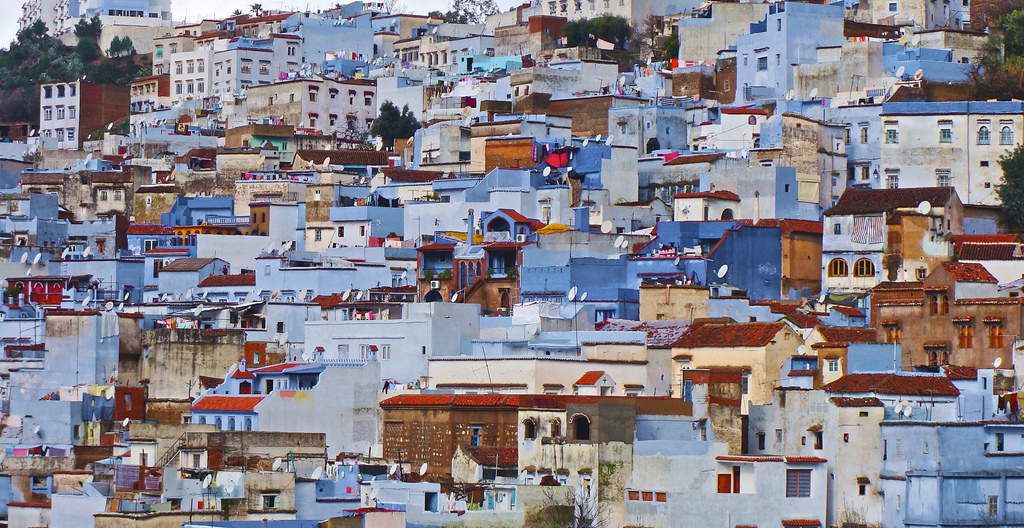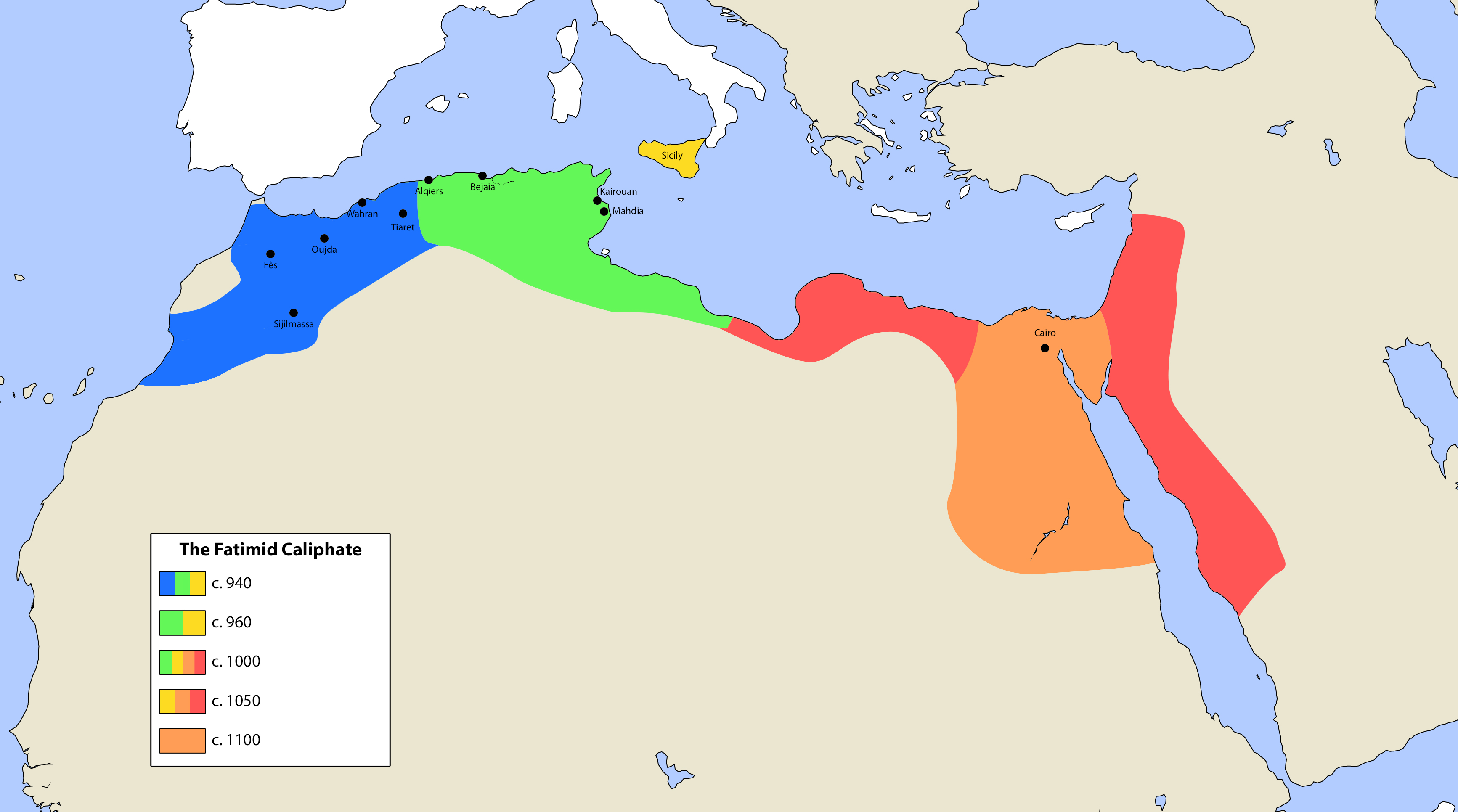|
Zellij
''Zellij'' ( ar, الزليج, translit=zillīj; also spelled zillij or zellige) is a style of mosaic tilework made from individually hand-chiseled tile pieces. The pieces were typically of different colours and fitted together to form various patterns on the basis of tessellations, most notably elaborate Islamic geometric motifs such as radiating star patterns. This form of Islamic art is one of the main characteristics of architecture in the western Islamic world. It is found in the architecture of Morocco, the architecture of Algeria, early Islamic sites in Tunisia, and in the historic monuments of al-Andalus (in the Iberian Peninsula). From the 14th century onwards, ''zellij'' became a standard decorative element along lower walls, in fountains and pools, on minarets, and for the paving of floors. After the 15th century the traditional mosaic ''zellij'' fell out of fashion in most countries except for Morocco, where it continues to be produced today. ''Zellij'' is found in ... [...More Info...] [...Related Items...] OR: [Wikipedia] [Google] [Baidu] |
Moorish Architecture
Moorish architecture is a style within Islamic architecture which developed in the western Islamic world, including al-Andalus (on the Iberian peninsula) and what is now Morocco, Algeria, and Tunisia (part of the Maghreb). The term "Moorish" comes from the historical Western European designation of the Muslim inhabitants of these regions as "Moors". Scholarly references on Islamic architecture often refer to this architectural tradition by a more geographic designation, such as architecture of the Islamic West or architecture of the Western Islamic lands, and some references on Islamic art and architecture consider use of the term "Moorish" to be outdated or contested. This architectural style blended influences from Berber culture in North Africa, pre-Islamic Iberia (Roman, Byzantine, and Visigothic), and contemporary artistic currents in the Islamic Middle East to elaborate a unique style over centuries with recognizable features such as the horseshoe arch, '' riad'' gardens ( ... [...More Info...] [...Related Items...] OR: [Wikipedia] [Google] [Baidu] |
Islamic Geometric Patterns
Islamic geometric patterns are one of the major forms of Islamic ornament, which tends to avoid using figurative images, as it is forbidden to create a representation of an important Islamic figure according to many holy scriptures. The geometric designs in Islamic art are often built on combinations of repeated squares and circles, which may be overlapped and interlaced, as can arabesques (with which they are often combined), to form intricate and complex patterns, including a wide variety of tessellations. These may constitute the entire decoration, may form a framework for floral or calligraphic embellishments, or may retreat into the background around other motifs. The complexity and variety of patterns used evolved from simple stars and lozenges in the ninth century, through a variety of 6- to 13-point patterns by the 13th century, and finally to include also 14- and 16-point stars in the sixteenth century. Geometric patterns occur in a variety of forms in Islamic a ... [...More Info...] [...Related Items...] OR: [Wikipedia] [Google] [Baidu] |
Architecture Of Morocco
Moroccan architecture refers to the architecture characteristic of Morocco throughout its history and up to modern times. The country's diverse geography and long history, marked by successive waves of settlers through both migration and military conquest, are all reflected in its architecture. This architectural heritage ranges from ancient Roman and Berber (Amazigh) sites to 20th-century colonial and modern architecture. The most recognizably "Moroccan" architecture, however, is the traditional architecture that developed in the Islamic period (7th century and after) which dominates much of Morocco's documented history and its existing heritage. This "Islamic architecture" of Morocco was part of a wider cultural and artistic complex, often referred to as "Moorish" art, which characterized Morocco, al-Andalus (Muslim Spain and Portugal), and parts of Algeria and even Tunisia. It blended influences from Berber culture in North Africa, pre-Islamic Spain (Roman, Byzantine, and Visi ... [...More Info...] [...Related Items...] OR: [Wikipedia] [Google] [Baidu] |
Alhambra
The Alhambra (, ; ar, الْحَمْرَاء, Al-Ḥamrāʾ, , ) is a palace and fortress complex located in Granada, Andalusia, Spain. It is one of the most famous monuments of Islamic architecture and one of the best-preserved palaces of the historic Islamic world, in addition to containing notable examples of Spanish Renaissance architecture. The complex was begun in 1238 by Muhammad I Ibn al-Ahmar, the first Nasrid emir and founder of the Emirate of Granada, the last Muslim state of Al-Andalus. It was built on the Sabika hill, an outcrop of the Sierra Nevada which had been the site of earlier fortresses and of the 11th-century palace of Samuel ibn Naghrillah. Later Nasrid rulers continuously modified the site. The most significant construction campaigns, which gave the royal palaces much of their definitive character, took place in the 14th century during the reigns of Yusuf I and Muhammad V. After the conclusion of the Christian Reconquista in 1492, the site became th ... [...More Info...] [...Related Items...] OR: [Wikipedia] [Google] [Baidu] |
Tile
Tiles are usually thin, square or rectangular coverings manufactured from hard-wearing material such as ceramic, stone, metal, baked clay, or even glass. They are generally fixed in place in an array to cover roofs, floors, walls, edges, or other objects such as tabletops. Alternatively, tile can sometimes refer to similar units made from lightweight materials such as perlite, wood, and mineral wool, typically used for wall and ceiling applications. In another sense, a tile is a construction tile or similar object, such as rectangular counters used in playing games (see tile-based game). The word is derived from the French word ''tuile'', which is, in turn, from the Latin word ''tegula'', meaning a roof tile composed of fired clay. Tiles are often used to form wall and floor coverings, and can range from simple square tiles to complex or mosaics. Tiles are most often made of ceramic, typically glazed for internal uses and unglazed for roofing, but other materials are also c ... [...More Info...] [...Related Items...] OR: [Wikipedia] [Google] [Baidu] |
Al-Andalus
Al-Andalus DIN 31635, translit. ; an, al-Andalus; ast, al-Ándalus; eu, al-Andalus; ber, ⴰⵏⴷⴰⵍⵓⵙ, label=Berber languages, Berber, translit=Andalus; ca, al-Àndalus; gl, al-Andalus; oc, Al Andalús; pt, al-Ândalus; es, al-Ándalus () was the Muslim-ruled area of the Iberian Peninsula. The term is used by modern historians for the former Islamic states in modern Spain and Portugal. At its greatest geographical extent, it occupied most of the peninsula and a part of present-day southern France, Septimania (8th century). For nearly a hundred years, from the 9th century to the 10th, al-Andalus extended its presence from Fraxinetum into the Alps with a series of organized raids and chronic banditry. The name describes the different Arab and Muslim states that controlled these territories at various times between 711 and 1492. These boundaries changed constantly as the Christian Reconquista progressed,"Para los autores árabes medievales, el término Al-And ... [...More Info...] [...Related Items...] OR: [Wikipedia] [Google] [Baidu] |
Fatimid Caliphate
The Fatimid Caliphate was an Isma'ilism, Ismaili Shia Islam, Shi'a caliphate extant from the tenth to the twelfth centuries AD. Spanning a large area of North Africa, it ranged from the Atlantic Ocean in the west to the Red Sea in the east. The Fatimid dynasty, Fatimids, a dynasty of Arab origin, trace their ancestry to Muhammad's daughter Fatimah, Fatima and her husband Ali, ‘Ali b. Abi Talib, the first Imamate in Shia doctrine, Shi‘a imam. The Fatimids were acknowledged as the rightful imams by different Isma'ilism, Isma‘ili communities, but also in many other Muslim lands, including Persia and the adjacent regions. Originating during the Abbasid Caliphate, the Fatimids conquered Tunisia and established the city of "Mahdia, al-Mahdiyya" ( ar, المهدية). The Ismaili dynasty ruled territories across the Mediterranean coast of Africa and ultimately made Egypt the center of the caliphate. At its height, the caliphate included – in addition to Egypt – varying ... [...More Info...] [...Related Items...] OR: [Wikipedia] [Google] [Baidu] |
Oxford Living Dictionaries
Lexico was a dictionary website that provided a collection of English and Spanish dictionaries produced by Oxford University Press (OUP), the publishing house of the University of Oxford. While the dictionary content on Lexico came from OUP, this website was operated by Dictionary.com, whose eponymous website hosts dictionaries by other publishers such as Random House. The website was closed and redirected to Dictionary.com on 26 August 2022. Before the Lexico site was launched, the ''Oxford Dictionary of English'' and ''New Oxford American Dictionary'' were hosted by OUP's own website Oxford Dictionaries Online (ODO), later known as Oxford Living Dictionaries. The dictionaries' definitions have also appeared in Google definition search and the Dictionary application on macOS, among others, licensed through the Oxford Dictionaries API. History In the 2000s, OUP allowed access to content of the ''Compact Oxford English Dictionary of Current English'' on a website called AskOxfo ... [...More Info...] [...Related Items...] OR: [Wikipedia] [Google] [Baidu] |
Morocco - Marrakech - Mosque Tiles (49131613737)
Morocco (),, ) officially the Kingdom of Morocco, is the westernmost country in the Maghreb region of North Africa. It overlooks the Mediterranean Sea to the north and the Atlantic Ocean to the west, and has land borders with Algeria to the east, and the disputed territory of Western Sahara to the south. Mauritania lies to the south of Western Sahara. Morocco also claims the Spanish exclaves of Ceuta, Melilla and Peñón de Vélez de la Gomera, and several small Spanish-controlled islands off its coast. It spans an area of or , with a population of roughly 37 million. Its official and predominant religion is Islam, and the official languages are Arabic and Berber; the Moroccan dialect of Arabic and French are also widely spoken. Moroccan identity and culture is a mix of Arab, Berber, and European cultures. Its capital is Rabat, while its largest city is Casablanca. In a region inhabited since the Paleolithic Era over 300,000 years ago, the first Moroccan state was ... [...More Info...] [...Related Items...] OR: [Wikipedia] [Google] [Baidu] |
Mansouria, Tunisia
El-Mansuriya or Mansuriya ( ar, المنصورية), near Kairouan, Tunisia, was the capital of the Fatimid Caliphate during the rule of the Ismaili Imams al-Mansur bi-Nasr Allah (r. 946–953) and al-Mu'izz li-Din Allah (r. 953–975). Built between 946 and 972, el-Mansuriya was a walled city holding elaborate palaces surrounded by gardens, artificial pools and water channels. It was briefly the centre of a powerful state that encompassed most of North Africa and Sicily. It continued to serve as provincial capital of the Zirids until 1057, when it was destroyed by the invading Banu Hilal tribes. Any useful objects or relics were scavenged during the centuries that followed. Today, only faint traces remain. Background The Fatimid Caliphate originated in an Ismaili Shia movement launched in Syria by Abd Allah al-Akbar. He claimed descent through Ismail, the seventh Shia imam, from the Islamic prophet Muhammad's daughter Fatimah. The Fatimid Dynasty is named after Fatimah. In 899 ... [...More Info...] [...Related Items...] OR: [Wikipedia] [Google] [Baidu] |
Mahdia
Mahdia ( ar, المهدية ') is a Tunisian coastal city with 62,189 inhabitants, south of Monastir and southeast of Sousse. Mahdia is a provincial centre north of Sfax Sfax (; ar, صفاقس, Ṣafāqis ) is a city in Tunisia, located southeast of Tunis. The city, founded in AD849 on the ruins of Berber Taparura, is the capital of the Sfax Governorate (about 955,421 inhabitants in 2014), and a Mediterrane .... It is important for the associated fish-processing industry, as well as weaving. It is the capital of Mahdia Governorate. History Antiquity The old part of Mahdia corresponds to the Ancient Rome, Roman city called Aphrodisium and, later, called Africa (a name perhaps derived from the older name), or Cape Africa. The Catholic Church's list of titular sees includes a no longer residential bishopric called Africa and, since there is no record of an episcopal see in Roman Empire, Roman times called by either of these names (nor by that of Alipota, another Roma ... [...More Info...] [...Related Items...] OR: [Wikipedia] [Google] [Baidu] |
.jpg)




